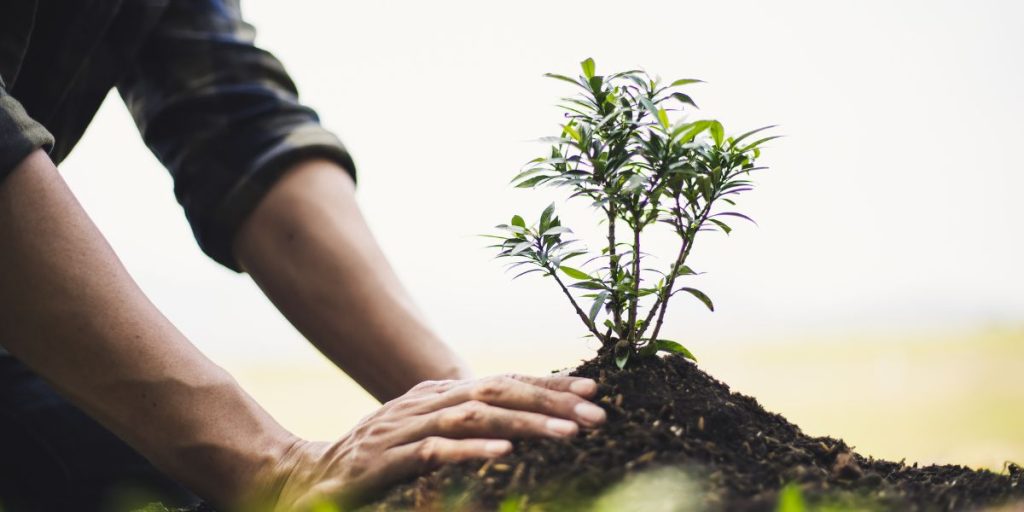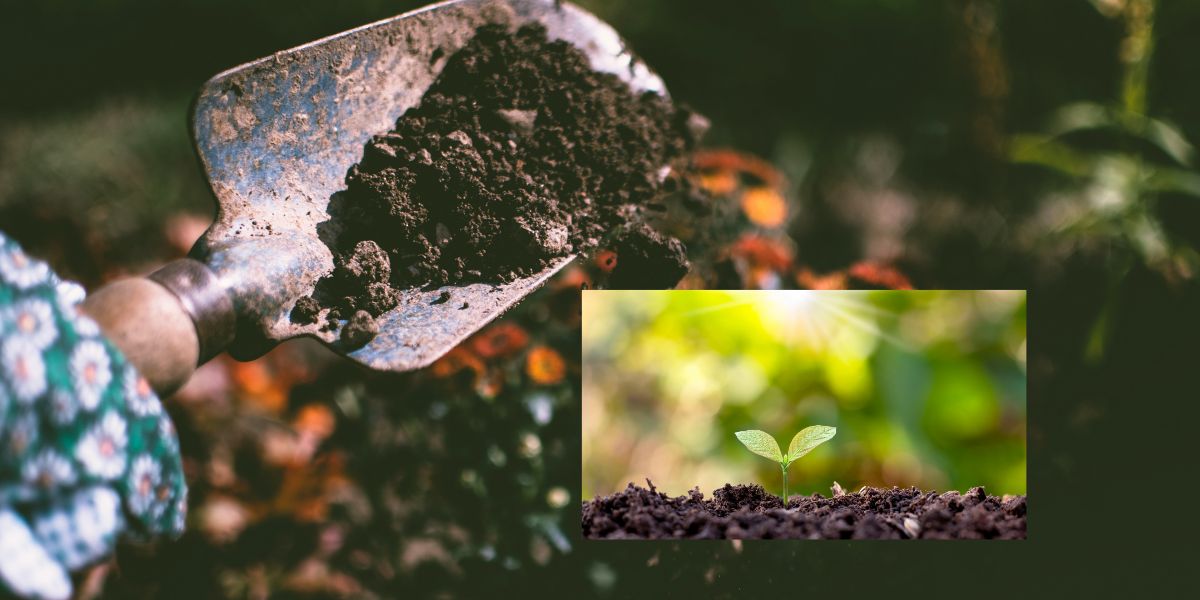Good soil is essential for the healthy growth and harvest of vegetables. Your entire garden is built on properly prepared soil, which also provides you a head start on the season.
Planting a seed in the ground does not begin a garden. Soil is where it all begins. Without rich, soft soil that encourages the roots to develop deeply enough to absorb nutrients, it is impossible to have strong, productive plants.
Compost and other organic debris can help your soil get better. With the activities of microorganisms (like earthworms) that break down debris to produce crucial nutrients that plants need, rich soil almost seems to have a life of its own. It drains effectively, loosens the soil to allow for more oxygen to reach the plants, stabilizes and anchors plant roots, and retains nutrients and moisture.
Table of Contents
How Healthy Soil Should Look
Plant roots that are supported by healthy garden soil have access to nutrients, water, and air. It’s neither too dense nor too loose, and it drains quickly while holding moisture. The topsoil, which is very biologically active and where the majority of roots develop, is also where earthworms, bacteria, and other beneficial species reside.
As they tunnel in the topsoil, earthworms increase drainage and aeration while their castings enrich the soil with nutrients. A soft, dark substance known as humus is produced during the decomposition of organic matter, such as crushed bark and vegetable matter. The subsurface lies beneath the topsoil. Despite having plant nutrients, it is not as kind to roots as topsoil. The largest positive impact on the health of your plants can come from improving your topsoil.
To achieve healthy topsoil, grow cover crops to add organic matter to the soil and loosen it, or treat your planting beds with organic amendments. Organic gardeners prefer natural fertilizers because they offer a more constant release of nutrients and promote healthy soil-dwelling organisms.

| Step Number | Step Description | Explanation |
|---|---|---|
| 1 | Assess Your Soil | Evaluate soil type, pH, and drainage for plant suitability. |
| 2 | Clear the Area | Remove weeds, rocks, and debris from the garden site. |
| 3 | Soil Testing | Conduct a soil test to determine nutrient deficiencies. |
| 4 | Amend the Soil | Add compost, organic matter, and nutrients as needed. |
| 5 | Soil Aeration | Loosen compacted soil to improve air and water circulation. |
| 6 | pH Adjustment | Adjust soil pH using lime or sulfur to match plant needs. |
| 7 | Mulching | Apply mulch to conserve moisture, control weeds, and insulate the soil. |
| 8 | Choose the Right Plants | Select plants that thrive in your soil type and conditions. |
| 9 | Proper Plant Spacing and Layout | Plan plant placement for optimal growth and accessibility. |
| 10 | Regular Watering | Provide consistent watering to maintain soil moisture. |
| 11 | Weed and Pest Control | Implement strategies to control weeds and garden pests. |
| 12 | Fertilization | Apply balanced, slow-release fertilizers as per plant needs. |
| 13 | Monitor and Maintain | Continuously observe plant health and make necessary adjustments. |
Preparing Soil for Gardening
1. Get rid of the rocks and junk
With the end of the spade, pry the grass from the planting area after cutting the sod into small squares.
2. Loosen the soil
If this is your first garden, loosen the soil to a depth of at least 8 inches (12 is preferable) to allow room for the roots to grow deep.
3. Add organic matter
If all you remember to do in the spring is to add organic materials like compost, you’ll be off to a terrific start! When the soil is moist but not wet, add on that day.
- Spread 2 to 3 inches or more of seasoned manure or compost over your soil (and no more than four inches).
- The organic stuff will be worked into the soil by numerous gardeners.
- A different approach is to just leave the compost on the surface in order to expose fewer weed seeds and preserve the soil’s structure. Give the worms the job of digging for you!
- A lot depends on the nature of your soil. If you have poor soil in the first year, we would work in the compost. Or, if your soil is hard and packed, think about creating a raised bed. Alternatively, you could grow in pots and planters.
- Before planting, use a steel garden rake to level the garden bed.
Other Soil Preparation Tips
Warming the Soil: This prep tip is very effective if you live in a colder region. Use a raised garden bed to help wet and cold dry soils dry and warm up fast. Another alternative is to cover the beds with black plastic or cardboard before planting. It will help block light penetration and protect the soil from rain, snow, and erosion.
Remove Weeds: this is an efficient and timely way of ridding your garden of weeds before planting. All you have to do is lightly disturb the soil surface and warm up the soil with a clear plastic. When the weeds come out, remove them with a hoe. Ensure not to dig up the soil as it will bring up new weeds. The whole idea is to the weeds on the topsoil.

What Does Healthy Soil Look Like?
A healthy soul is neither too dense nor too loose. It drains water fast yet retains moisture. Healthy garden soil supports plant roots and gives them access to nutrients, water, and air. A healthy soul is an active home for microbes, earthworms, and other beneficial organisms, which is why most roots grow on them.
Earthworms improve drainage and aeration as they tunnel, while their castings enhance the overall nutrient content of the soil. The topsoil is rich in nutrients because it contains decomposing matter like vegetable matter, leaves, and tree bark. This is what creates the soft, dark substance called humus.
One of the best ways to get a healthy topsoil is treating it with organic amendments. You can also grow cover crops to the soil to loosen it.
Most organic gardeners prefer adding natural fertilizers as they provide more sustained nutrients. They also encourage beneficial soil-dwelling organisms.
Frequently Asked Questions[FAQs]
1. Do You Need To Let The Soil Sit Before Planting?
Yes, sprinkling water on your soil, you must let it sit for some days before planting. During spring and summer, if you plant compost tea, it adds nutrients to the soil and increases the amount of microbial life in the soil.
2. Can You Plant Straight Into The Soil?
Yes, planting seeds straight into the soil is called direct sowing. It is an easy process, unlike indoor seed starting; direct sowing includes unpredicted elements like wildlife, weather, and insects. Most vegetables, herbs, and perennials grow quickly from seed sown directly into the soil.
3. Which Is Better, Topsoil Or Compost?
Both soils are great, depending on what your plant requires. Compost has more nutrients than topsoil, while topsoil is great at retaining moisture and holds its structure more than compost. Topsoil is also cheaper than compost.
4. What Should You Put Down Before Soil?
Whether in fall, spring, or both, put a 2 to 3-inch layer of compost on the bed and then turn the compost into the soil. This will help to increase the soil nutrients for more crop yield.
5. How Long Should You Let The Soil Sit Before Planting?
It is best to let your soil sit for 2 weeks minimum. However, most professional gardeners advise one month max. That’s because it gives enough room for microbes to break down the organic matter and make it available for the plant.
Wrap Up!
It is important to prep your garden before you decide to grow anything on the soil. Once you miss this critical step, your crops might end up not growing as you want them to.
Before preparing your soil for gardening, you should first know the soil type, test the pH of your soil as it is a necessary factor, retain components with organic matter, attract the help of microorganisms, mulch, avoid tilling, and trust me, your garden will be flourishing in no time.

